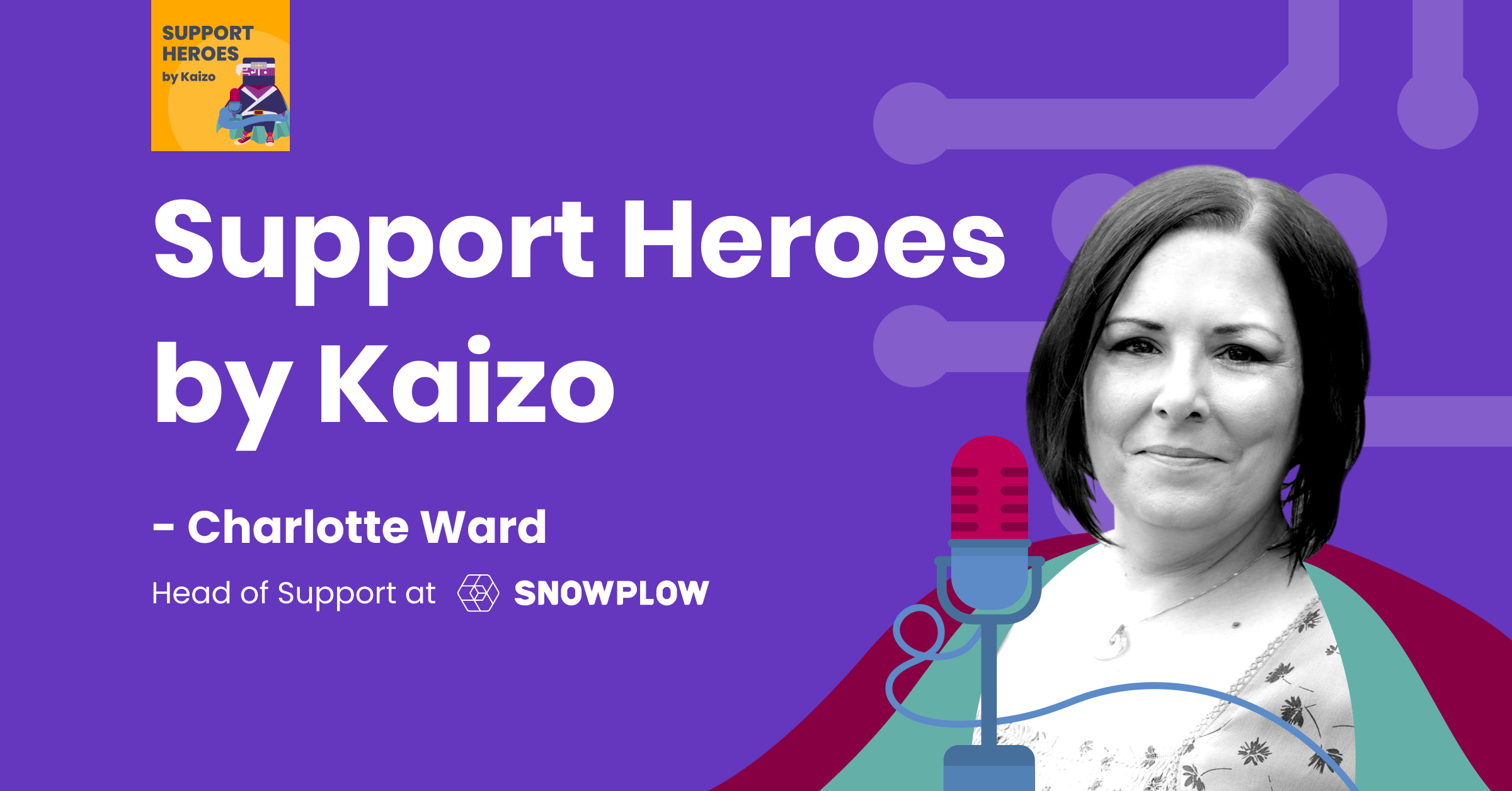Click ‘subscribe’ in the bottom right of the player to listen or download from Apple Podcast, Spotify, Google Podcast, and Amazon Music.
The fifteenth release of Support Heroes by Kaizo featured Charlotte Ward- Head of Support at Snowplow.
In this episode, Charlotte chronicles her transformation from being a shy technical support agent to becoming a vocal leader of a distributed team as Head of Support at Snowplow. Charlotte also shares some top tips on remote management/teamwork that she developed from years managing and working in distributed teams.
Key Highlights
1. You can learn to lead even if you don’t want to lead naturally
2. The two keys to successful remote management/teamwork
You can learn to lead even if you don’t want to lead naturally
“I liked the idea of solving problems in a finite way…I had this voracious appetite for the next problem and what I realised was that support was a day full of problems”
Charlotte describes herself as having a compulsive problem-solving habit.
The dopamine reward that this habit awarded her after solving each technical support request was, at the time, enough satisfaction to sustain her professional life.
“[Going into leadership] just wasn’t something I was interested in or most of my peers were interested in at the time. We were techies. We were engineers”
However, by virtue of applying this same problem-solving habit to other facets of her working environment, Charlotte found herself being more and more involved with operations- the heart of every support department.
“When I wasn’t talking to customers, I was always looking around for other things to do, other things to fix…”
“…those things were buy-and-large operational because support runs on operations, data, process and tools”
Despite not particularly wanting to take on leadership roles in the past, Charlotte’s focus on operational excellence and interest in making things better graduated her to a senior leadership position.
“What happened, now I look back, was that I started to perceive the business of support as an opportunity for problem-solving and for fixing, rather than just providing the support.”
“I could fix processes, tools, strategies…there were all these other things to fix”
The motivation to move into leadership, rather than naturally wanting to lead, was simply the result of wanting to solve problems that Charlotte herself faced while being a technical support representative.
“[Wanting to lead] was born from feeling the pain because I was on the frontline..”
“…and understanding the operations, the tooling, etc. gave me an understanding of what made it hard to be on the frontline”
Charlotte’s story is an example that one doesn’t need to feel as though they were made to lead or to manage. You can learn, and grow outside of your natural comfort zone to find great success in managing other people.
“The people management side of [the job] is a set of skills I have learned and I’m still learning.”
“People management is not easy. No matter how naturally it comes…I didn’t come to this [position] from a natural’s point of view.”
The two keys to successful remote management/teamwork
Charlotte had many years of experience managing remote teams prior to the pandemic.
Based on this expertise, Charlotte believes successful remote management/teamwork comes down to two things:
“The first thing is really high levels of communication. I never ever see a conversation as a waste of time.”
“I encourage lots of conversations. I have one-to-ones weekly with my team…We have a lot of small breakout sessions scattered through the week as well”
Communication, however, is multifaceted. Charlotte believes that zoom calls are a place for collaboration, inspiration and bonding but there are other, more ideal, places to get work done…
“Video calls give you that social element that you need to be inspired by people and to make connections with them but communication happens in many different ways…”
“…communication on slack achieves a different thing. But communication also happens in a Jira card or a ticket…”
Regardless of channel, the intention of communication is to bring everyone onto the same page so that no one is left isolated and unaware.
“I’m a great believer in encouraging my team to work out loud. Tell me and everyone else on the team what you’re doing because otherwise, we have no visibility.”
The second aspect Charlotte references as being the key to successful distributed work was regarding records and documentation.
“The other part is about leaving a trail of artefacts behind you; it’s having things that persist.”
“Some of those [artefacts] are conversations but because they are happening in a Jira card, they are recorded. So anyone can arrive at it and understand what’s happening”
Documentation ensures that things are recorded. Then they can be revisited, reviewed and included in current decision making and communication.
“Decisions are recorded and processes are captured. It’s not for social connection, it’s more about connecting up the work.”
“When work doesn’t happen [privately] in zoom or in slack, the work persists. Anyone can join in and contribute. That’s the ideal right”


